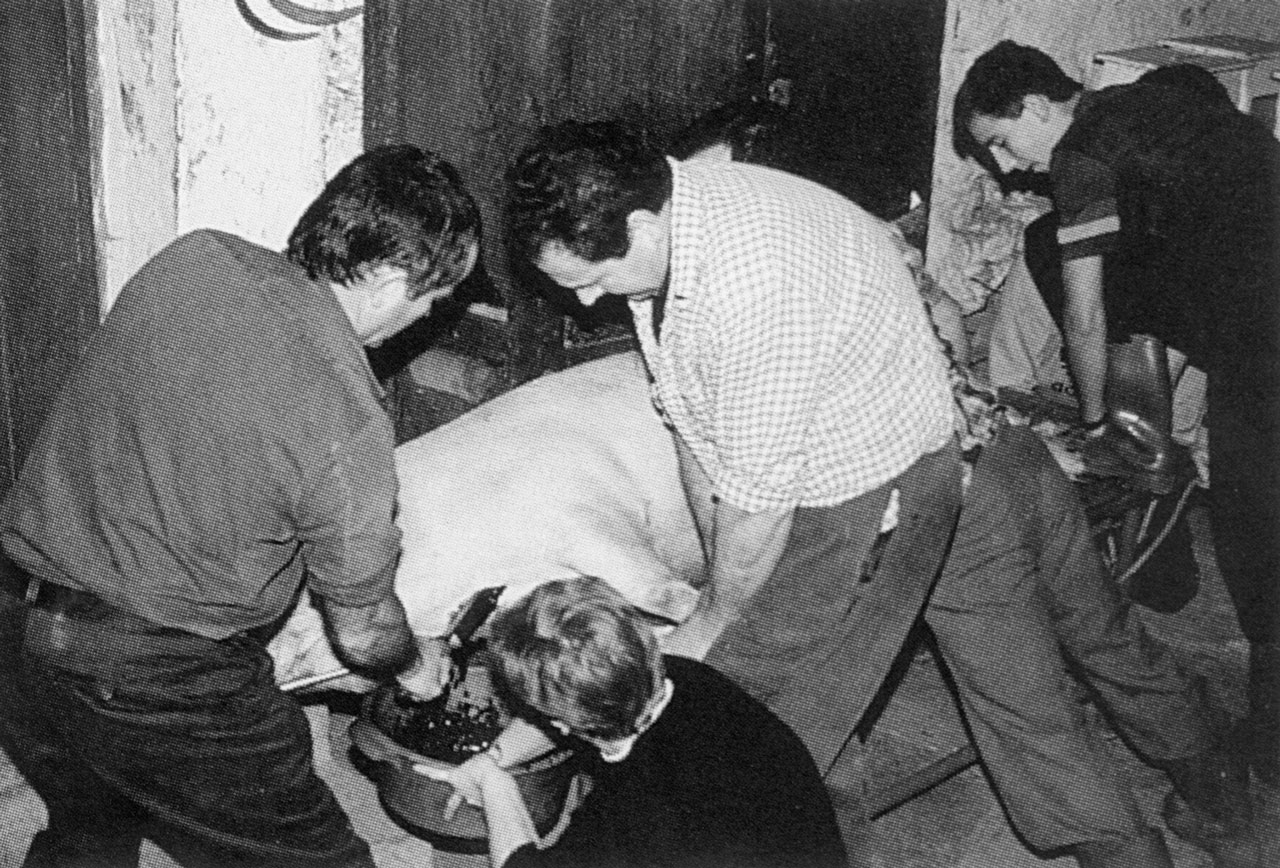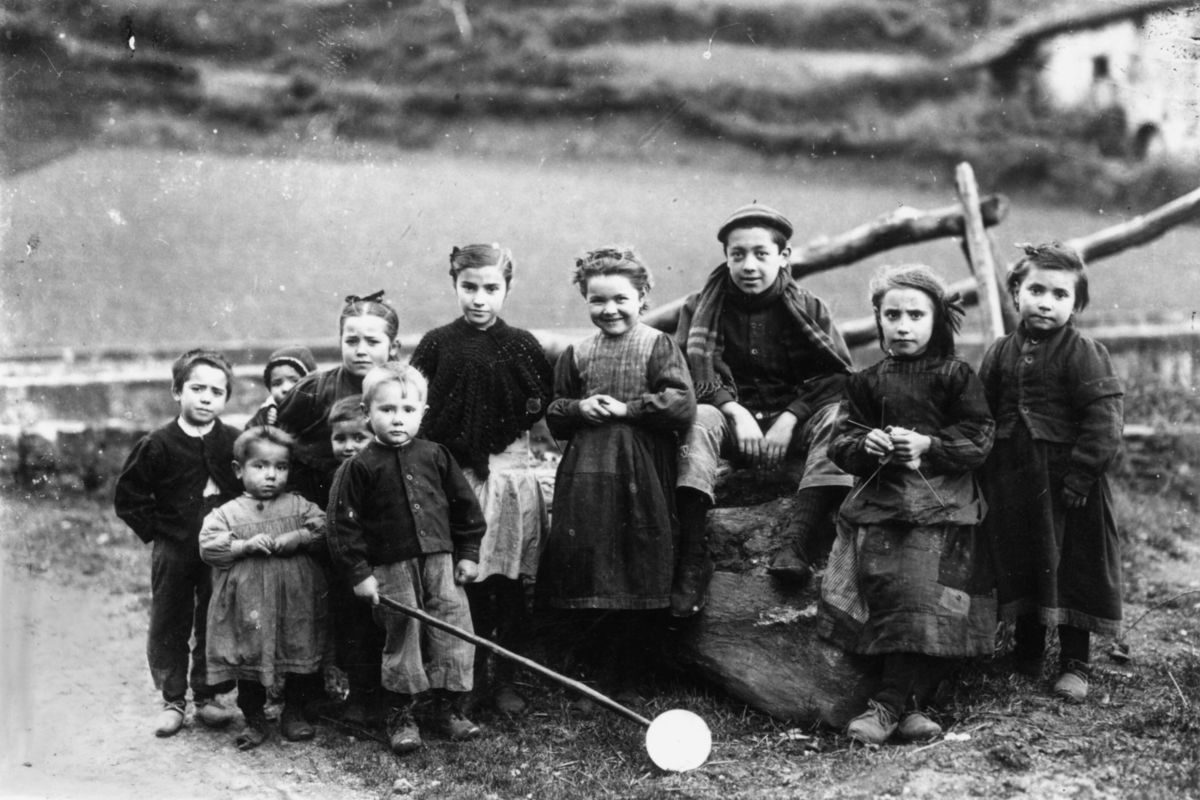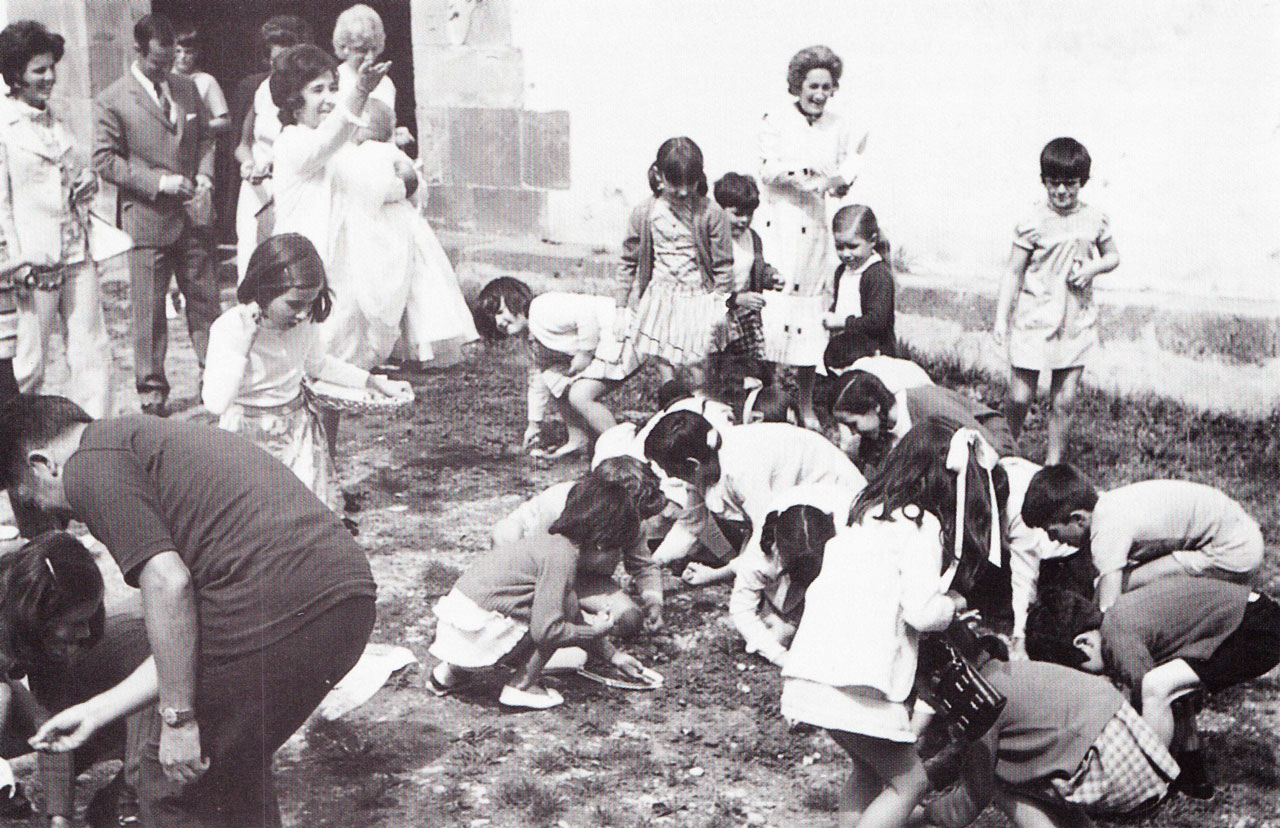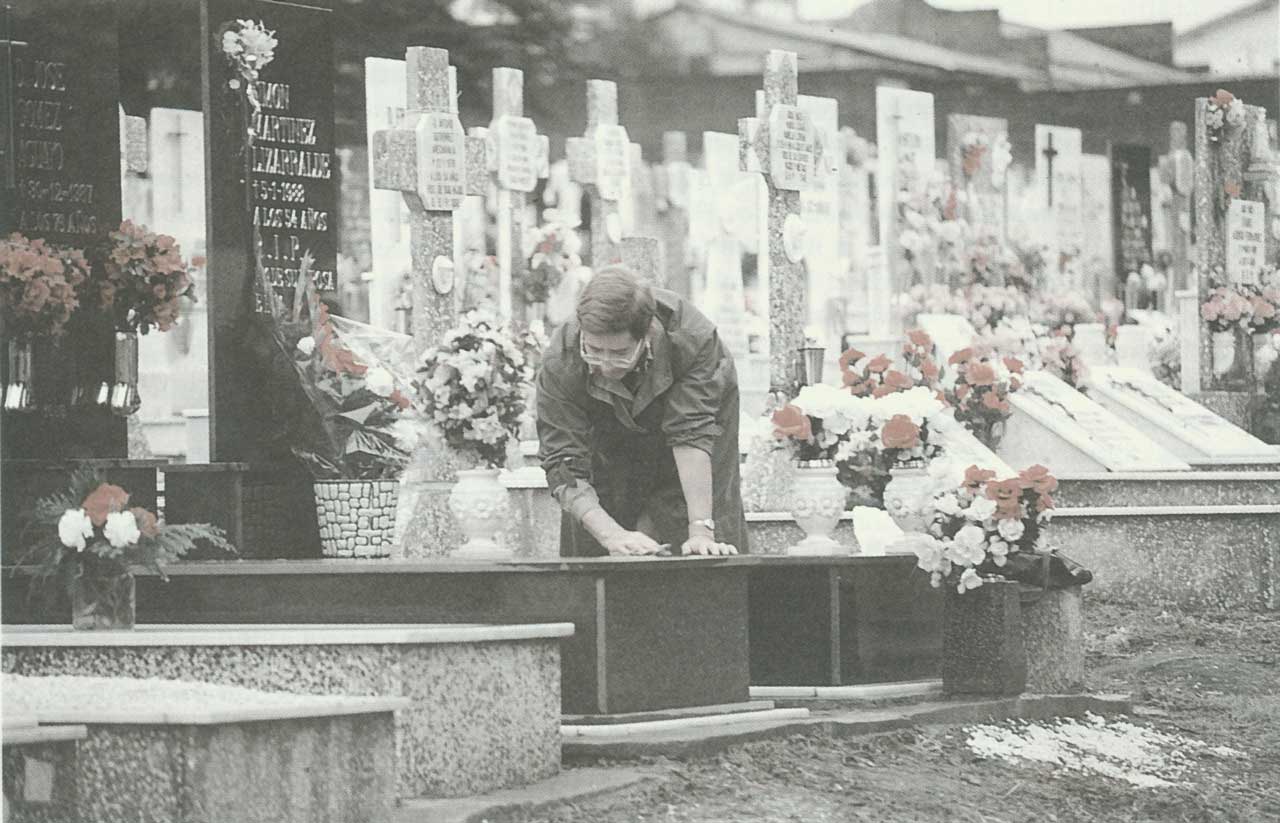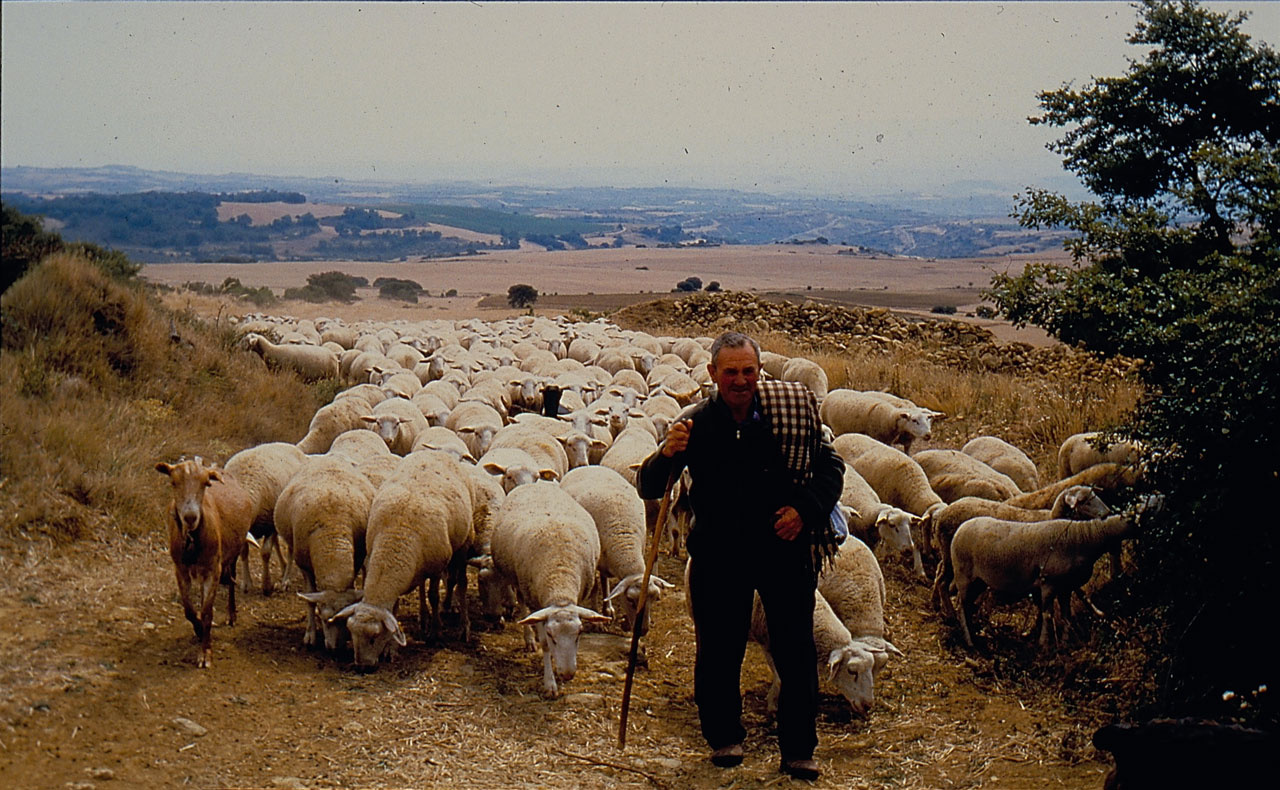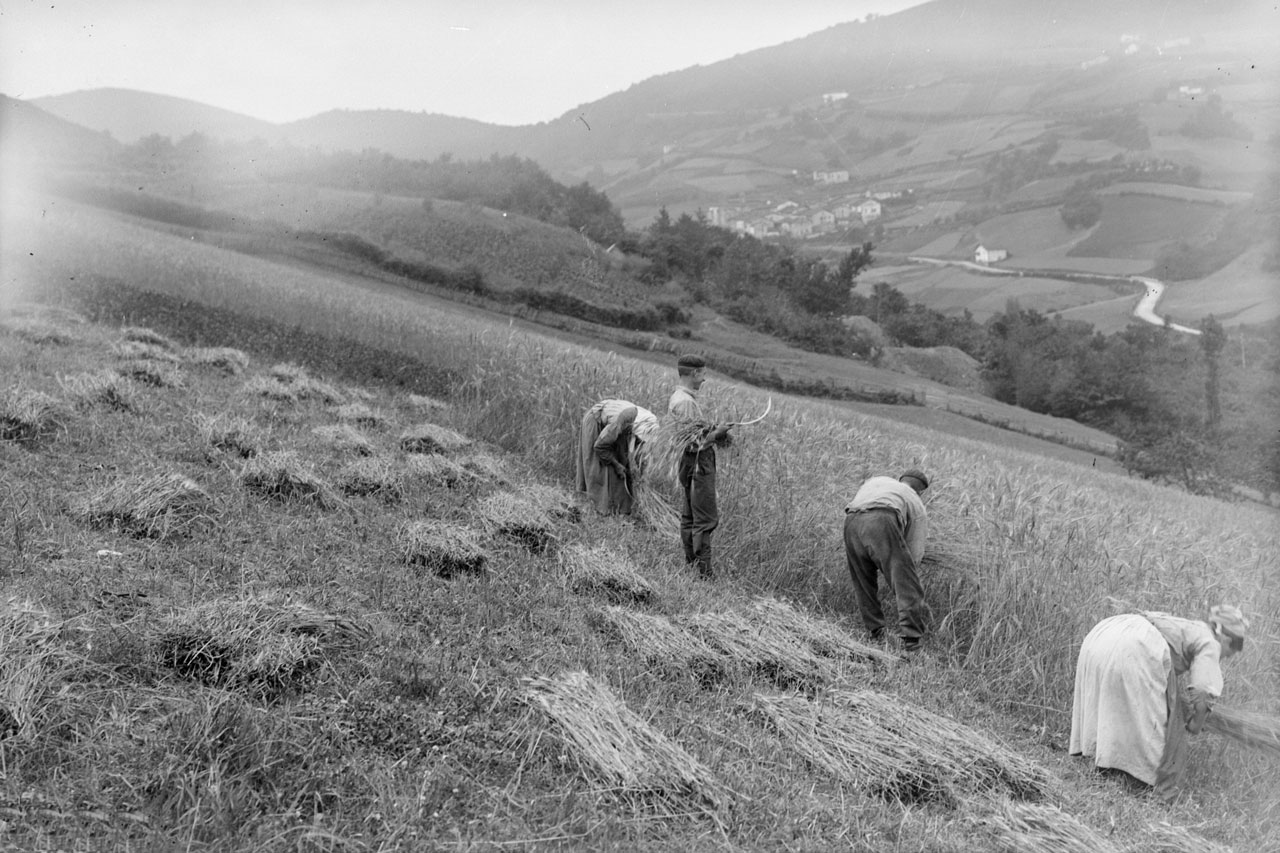Diferencia entre revisiones de «Main Page/en»
De Atlas Etnográfico de Vasconia
(Página creada con «====[/atlas/agricultura/Siega-de-trigo-Gesaltza-1950.jpg|Wheat harvest. Gesaltza (G), c. 1950. Source: Municipal Archive of Vitoria-Gasteiz: Enrique Guinea Collection.|Sats...») |
|||
| Línea 2: | Línea 2: | ||
<languages /> | <languages /> | ||
| − | |||
| − | |||
{{DISPLAYTITLE: Ethnographic Atlas of the Basque Country}} | {{DISPLAYTITLE: Ethnographic Atlas of the Basque Country}} | ||
Revisión actual del 16:55 11 mar 2020
Four generations of the same family. Ajangiz (B), 1977. Source: Segundo Oar-Arteta, Etniker Euskalerria Groups.
House and Family in the Basque Country


House and Family in the Basque Country
The family was the cornerstone of the farmstead, and the farmsteads along with the families provided coherence and structure to the neighbourhood and society.
Family Diet in the Basque Country


Family Diet in the Basque Country
Odolosteak ordeaz. Neighbours and relatives are given black puddings and other pork cuts as a gift at pig slaughter time. It is an act of courtesy, an expression of the close bond shared with them, and part of an established exchange ritual.
Group of children. Zeanuri (B), 1920. Source: Labayru Fundazioa Photograhic Archive: Felipe Manterola Collection.
Children’s Games in the Basque Country


Children’s Games in the Basque Country
Children in the traditional society, both in towns and in countryside, only really had the toys that they made themselves. Games were more common than toys, and the latter were just a basis for the former.
Traditional Medicine in the Basque Country


Traditional Medicine in the Basque Country
Nolako gaitza, halako erremedioa. There’s a cure for everything.
Rites from Birth to Marriage in the Basque Country


Rites from Birth to Marriage in the Basque Country
Haurraren jaiotza, etxerako poza. A house without children is a flowerpot without flowers.
Funeral Rites in the Basque Country


Funeral Rites in the Basque Country
Omens of death included those associated with strange behaviour by some domestic animals, mainly dogs and cockerels.
Shepherd from Lanciego (A) on the climb to Toloño, 1996. Source: José Ángel Chasco, Etniker Euskalerria Groups.
Livestock Farming and Shepherding in the Basque Country


Livestock Farming and Shepherding in the Basque Country
The Mediterranean watershed of the Basque Country was, and to a large extent is, characterized by the importance of the commons, the communal character of their exploitation by associations and brotherhoods comprising multiple municipalities still persisting today.
Agriculture in the Basque Country


Agriculture in the Basque Country
Satsitu ta jorratu ta garia hartu. Spreading manure and weeding and harvesting wheat.

